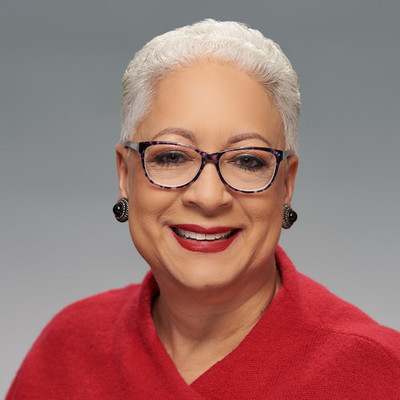Conversations at work may seem like a byproduct of the culture. However, Kristina Smith says they are the DNA. The level of understanding and empathy shown in daily conversations does more to impact the culture of a company than anything else you can do.
Kristina advocates for a We-centric culture. One that strives to find the best for the entire group, and doesn’t just seek to get its own points across. There are a lot of ways that you can move towards a better collective discussion, and Kristina tells us about them.
What we learned from this episode
-What it means to build a We-centric culture
-Building a better culture doesn’t start with posters, but the conversations that take place on a daily basis
What you can do right now
-Ask questions that you have no answers to
-Start sentences with “I’m curious…”
Key quotes
“To get to the next level of greatness, it depends on the quality of the culture in an organization, which depends on the quality of the relationships, which depends on the quality of the conversation.”
“The more we can learn about ourselves and how we perceive things and why we perceive what we perceive, it just brings a totally different quality to the conversation.”
“Organizations are spending all this money on trying to get their employees actively engaged. Really, when you have the right conversation, you can engage your staff.”
Links mentioned
Email Kristina – [email protected]
Today, our guest is Kristina Smith. She’s an organization improvement specialist that facilitates civil conversations to improve our communities one conversation at a time. We’re calling this episode Work Minus Us vs. Them. Hi, Kristina. How’s your day going?
It’s absolutely great, Neil. How’s yours?
Very good. Very good. I’m enjoying life. It’s a good place to be. So, tell us a little bit about yourself, organization improvement. What do you do?
I work with organizations that are either in conflict and are trying to find their way out of conflict or some organizations are doing really, really well and they’re just trying to get to the next level of greatness. One of the things that I know, Neil, is that to get to the next level of greatness, it depends on the quality of the culture in an organization, which depends on the quality of the relationships, which depends on the quality of the conversation. And I didn’t make that up. My mentor and colleague, Judith Glaser has been studying conversational intelligence for many, many years, and has done a lot of work in that area of neuroscience and the brain and conversations and how we can take really disruptive conversations and make them productive and so that organizations have a great creativity and innovation.
So, you took us real deep, real fast. We went from culture down to relationships down to conversations. So, let’s back up to the surface a little bit. So, we’re trying to build great organizations. We’re trying to get to that next level. And you say that’s determined by the quality of the culture that we have. And culture is made up of people so the people, how we interact together, the rules that we have for how we engage with each other. And you’re saying that the basis of those rules is how we talk to each other. Or how do you define conversations? Why don’t you start there?
So, conversations are just that, how do we interact with one another? Whenever there’s a message, there’s always a meta message, there’s always a message underneath. So, what a lot of organizations struggle with are everyone has biases. And so, sometimes those biases are coming across. Sometimes someone perceives something as an intention that’s not really there. So, all of that is built into a conversation, how we talk to one another is critically important, it really determines how we get work done at work, or if we don’t.
So, there’s so much when you talk about conversation, like you said, that it’s not just I give a thought, and you interpret the exact meaning, the intention that I had behind it, and you can see everything. So, at what point do you as a strategist, a specialist come in and be able to help people see what they’re communicating, what they’re not communicating, what they’re interpreting, what they’re misinterpreting. That seems really sticky.
Yeah, it really is. But actually, it’s very simple because Judith was just so brilliant in her work. And she designed this thing called the dashboard. And it’s a physical… it looks like a speed map. And you can actually see where you are on the speed map. You can see if you are in a protective mode when you’re having a conversation with someone, or if you’re in an open aspirational point where you’re ready to co-create something inspirational. And they are at two opposite ends of the spectrum.
Can you give us an example, maybe even from your own experience and work life? What’s a time when you felt like you were being very protective in a conversation?
Well, let me actually use my brother because he came to me recently. It’s easier. He came to me recently, and he was having a really difficult conversation with his adult daughter. He was just so frustrated and angry that she wasn’t getting what he was trying to share. And I just said to him, “That’s because you are in yell, tell, sell mode.” And basically, what that means, first of all, in so many cases, we have good intentions. But what happens is, when we are in a mode where we’re just trying to get our point across that we can’t hear the other person. So, one of the things I work with clients on and families is how to listen to connect. How do you shut down your own internal thinking for a moment to just listen to another person and try to see where they are coming from? And how I do that in organizations is through asking questions. Sometimes in the middle of a conversation, we press pause. And I just ask the question, what did you hear? What did you just hear? Sometimes it’s amazing what people think they heard. And so, we dissect that. And it is really amazing. Some of the clients that I’m currently working with, they’re making great strides because they didn’t realize they’ve been missing each other in terms of trying to get their points across. It’s really fascinating.
Yeah, and I think that’s the heart of it is, I think we can all point it out in other people pretty easily when someone else is being protective, when someone else is not listening to what I want to say, or something like that. But to really turn that around and recognize it when we are doing it, that’s the real challenge, right?
Yes, exactly. And really, you know, Neil, and everyone listening knows, we cannot change anyone else. The more we can learn about ourselves and how we perceive things and why we perceive what we perceive, it just brings a totally different quality to the conversation.
Well, let’s talk about our theme today. We’re talking about Us vs. Them because now it’s not just a one on one. Now, it’s like we have a crew and we’re fighting against somebody else. So, where does that come into play when it comes down to conversations?
So, what I find most often in organizations is that leaders, especially leaders who have been in their positions for a long time, really believe that they are the ones who are supposed to come up with all the answers. And they’re supposed to give it to people, the supervisors or direct frontline staff, that it’s supposed to come from the top down. And the challenge with that, and I tell people this all the time when I work in organizations, it really is like putting together a puzzle. Every person has a piece of the puzzle. And I am telling you, when you hit this one lever of having great conversations, you are solving so many problems. One problem you’re solving is connecting with people. So, organizations are spending all this money on trying to get their employees actively engaged. Really, when you have the right conversation, you can engage your staff. People are not feeling loyal to organizations. When a person is heard, when they’re able to contribute their piece to the puzzle, it is the most rewarding thing. Most people want to come to work and want to feel like they’ve made a contribution. I don’t know whether you’ve ever heard the story, and this was a long time ago, I was working with some folks from NASA. And they love to tell the story about when John F. Kennedy, Jr. went down to Cape Canaveral in Florida. And he was walking through the hallway and he stopped to talk to a janitor. And he asked the person, “Sir, what do you do here?” And that person said, “I’m trying to help get a man to the moon.” Everybody had the same idea, “We’re working together.” And when organizations have great conversations, everyone feels like I’ve got a stake in what we’re trying to do here.
Let’s talk about some typical conversation traps people fall into. When you walk into a new organization, you’re trying to help them out, what are some of the telltale signs that they have some issues going on?
When people are unrelenting about their point of view, when they’re just determined, “I know what the answer is. We’re doing it this way. This is what’s going to work.” The other thing is that when people are really not listening. They won’t let someone else finish their sentence before they’re jumping in and cutting them off. So, I really focus on listening to connect, and it makes a huge difference. Another thing is you can tell people, they may be polite and sitting there and being quiet, but they’re already forming their own how they’re going to respond. And so, one of the things that I have people practice doing is asking questions for which they have no answer. And that’s an exercise that really just throws people for a loop because they’re so used to asking questions trying to lead people down a particular path to get to their point that when they have to throw out a question where they don’t have an answer, it’s enlightening. And what bubbles up is so extraordinary for people.
You said earlier that leaders feel like they have to have all the answers. They feel like they have to be the ones that know where we’re going. They charted the course. They have everything figured out. But to actually step back and ask, “I don’t know what to do next. We need to figure this out as a team.” That’s a really open conversation to have.
It’s amazing. One time I worked in an organization where the chief financial officer was fired, I think for doing something like embezzling funds or whatever, and the new person who was put in that role had been in the organization a very short period of time. And he turned out to be one of the most successful department heads because he did just what you said, Neil, he stepped back and he pulled this team together. And he said, “Look, we’re going to get through this together. But honestly, I don’t have a clue. I need your help.” And people just couldn’t wait to support him. They were determined that he was going to be successful, and that their team was going to be successful. So you’re right on.
You brought up something that I want to get into. I think when we think about bad conversations, the first thing we think about is, like you said, people shouting, people not listening to each other, all this aggression that’s there. But there’s the other side, that’s the very polite and quiet, the passive aggressive, the one that just swallows the statement and thinks about it later and holds on to it, which honestly, when I’m in a meeting, I tend to be more quiet and hold on to those things rather than put them out there. What do you feel? I feel like both are equally bad. But what are your thoughts about how that can destroy a culture?
That’s not good because we see this in organizations all the time. And again, it goes back to you may be holding a piece or somebody else may be holding a piece that’s integral to moving the organization forward. Now, we have to take into consideration that there are introverts and extroverts. And sometimes introverts really need to go home and process it, think about it, come back tomorrow and have a great piece to contribute. Well, for people who deliberately sit there and don’t contribute, and they have a piece, it’s not helpful to the organization, it really doesn’t help. So, part of what I try to do with an organization is make sure we have an agenda that goes out in advance so that people know what we’re going to be talking about, what we’re going to be doing, so they can walk into the room with a little bit of information so they’re not really blindsided.
I think that’s helpful. I’m one of those people who, when I’m in the middle of a conversation, I can’t think of what to say next, like what I should have said, and maybe a day later, maybe several hours later, I think about, I should have brought up that point, or someone will bring it up later and I’ll be like, yeah, I was also thinking that, but I just didn’t bring it up. And so, I feel like I’m withholding from those conversations or I’m just not skilled enough to bring that in. So, that’s one good idea I like, having an agenda ready ahead of time. Are there other ideas?
Another idea that I like, sometimes I use this as a stall technique, not often, but sometimes something’s bubbling in my head. And I really am trying to think there’s something coming up for me, but I can’t put my finger on it just yet. So maybe the person who just spoke, I will do this thing that Judith coined double clicking. It’s like double clicking on a mouse. So, if someone says something, I may say, I’d like to double click on this, and I would have explained this in the session ahead of time. Double clicking means I’d like to drill down a little bit deeper. You said we need to do this because of this. Can I double click on that? Can I ask you what makes you think that? Because so often, if we can get to why do people think the way they do, we can really uncover a lot. So, what that does for me is it allows me to… I’m still listening, but I’m also drilling down on what is this thing that’s coming up for me? And I would say 85%, not 100%, 85% of the time, it will come to me what I’m trying to say so I can get that piece in.
Let’s take a different perspective. We’ve said it’s difficult to be self aware of when you are not doing a great job in conversations. But let’s say you’re not receiving the bad end of the communication. But you’re noticing it happening between two other people. What are some ways, maybe it’s your manager, maybe it’s a colleague, a peer that’s there, and you notice that they are actively not doing a great job in their conversations. They’re not listening, they’re leading the team in terms of only asking questions they know the answer to, those types of things. What are some ways you can help your friend, your colleague, that you feel like is in that position without just totally lambasting them and telling them they need to shape up?
That’s a really good question, Neil. One of the things I would do if I were in that position, and I could also advise other people to basically, I use this word a lot, and it’s not a tip or technique, it really is the truth. Many times I will say, I’m really curious, because I’m not blaming anyone, I’m not pointing the finger at anyone. But I am curious, why is this conversation taking this shape? Or I might say, “Neil, I’m really curious, you seem to be really upset by what Tom just said, or Jill just said. What is that about?” Because when you bring curiosity into the mix, it doesn’t set off… it’s bad enough when two people are in an argument, and then a third person jumps in. That doesn’t help. But once you slow it down, and start to ask questions, that is a big help. That’s a huge help.
It’s great when we’re face to face, when we’re sitting across from each other, we can see the body language, we can pick up on the intonation, but so much of communication is digital these days, whether that means instant messages or emails. What are the issues you’ve seen that come across in conversations from digital conversations?
That is really tricky because what scientists, psychologists tell us 85% of what we pick up in a conversation is through tone of voice, body language. And when you don’t have that and you’re just dealing with the words, that can be really dangerous or explosive. So, one of two things. If I start to see a conversation going south, and I’m thinking, wow, where did that come from? I will timeout, either pick up the phone and call the person, or if I can, I’ll go face to face. Or I’ll say, “We need to have this conversation a little bit later. This is not working right now. There’s something missing in this conversation.” And so, whenever possible, I try to interrupt it, and then try to have it at another time when I can do it face to face. Because so much is miscommunicated when we’re working digitally.
Have you noticed any organizations you’ve worked with that have set policies in terms of that, in terms of how often email exchanges can go back and forth, or how often you just really need to get in front of somebody and be in person?
Yeah, actually, pretty consistently I’m seeing organizations write out a policy, and many of them are saying things like, go back and forth more than twice, then you need to be face to face, especially if it’s something that’s disruptive, caught up in some confusion, you need to stop it right then and there, pick up the phone or go walk down to that person’s office. Or I don’t know. A lot of people work from home these days, but at least pick up the phone and call.
Yeah, it’s true. Now that we’ve been in this bottom layer for a while, talking about conversations, move back up. How is it that conversations impact relationships? If we’re going conversations, relationships, up to culture, I want to get to the point where we can say, we have a “We” culture. This is all of us together, not us versus them. So, bring us back up to the top there.
So, what’s so interesting is, when we are in this I-centric mode, and again, these are Judith’s way of building this whole conversational intelligence, when we are in the I-centric mode, we’re often protecting our territory or protecting our knowledge or protecting our team or whatever. And what happens neurologically and in the body is when we are in that mode, we are really inundated with cortisol, we become stressed. And what happens when we’re in that place, we cannot think of solutions. Solutions are concocted in the prefrontal cortex. And in order to really have creativity and innovation and speed to market with product, you’ve got to be in a place of creativity. You can’t be there when you’re in the I-centric mode. When we build an organization that is trusting, when we move into we-centric, when people are really fighting for the good of one another, the good of the organization, then I am telling you, you work much faster. One of the phrases that I use all the time is assuming positive intent when you build a kind of trust with people, and you can assume positive intent that I don’t have to second guess, is she doing that to set me up to fail because when I have that in my mind, I can’t be productive and creative. So, the conversations really start at the level of person to person, team to team. But when you build that we-centric platform, boy, I tell you, it’s amazing to watch.
My last question, Kristina, is about just cultures in general, because I feel like a lot of times communication rules, relationship rules, cultural rules revolve around where you came from, the family you grew up with, part of the country or the country you came from. So, what are some ways, even if you look and say, we’re all from the same place, or if you can notice some difference in diversity around you, how do you take those into account when you’re building this culture?
So, it’s interesting, and that is a fantastic question to wrap this all up. Because I’ve been personally paying attention to, even in my social social media community, and seeing the diversity in terms of politically what’s going on and how intense people are. And for a moment, I have to say, I got caught up in the intensity myself. I was like, “Wow, how do these people not see blank? How do they not see this? I don’t understand.” And then I said, “You know what? I’m going to take a step back.” And so, literally, what I did was I said, I’m really going to put into practice what I try to model. And so, right now, I’m in the phase of I’m just observing it. I’m just observing the conversation. And when there’s an opportunity for me to throw a piece out, to just ask the question, have you thought about this? And sometimes people will say, “Nope, and I’m not interested in thinking about that.” Or sometimes they’ll come back and say, “No, I hadn’t thought about that. Thank you for putting that out there.” So, I’m playing with that, because really, my dream would be to bring people together that really have very diverse and staunch beliefs. And they’re in two different camps. And so, to foster conversations, because we really do need to turn this around so we are more civil at work, in our families, in society. It’s got to change.
And it’s not that we all have to have the same politics, have the same thing, but I need to be able to understand that if you and I disagree, that I understand where you’re coming from, and I can put that together, and I’m assuming that positive intent, like you talked about, that you’re not believing that just because you hate me or because you hate something like that. But you’ve honestly come to that conclusion, and I can respect that. So, I think that’s a better place to be. Tina, thanks so much for being on this show. We learned a lot from you. It’s been a pleasure. Where can people go to stay in touch with you?
We’ll have it in the show notes so you don’t need to remember it too much so we’ll make sure people get it there. Thanks so much for being with us and sharing all your insights with us.
Kristina Smith assists organizations to exceed expected business results through designing and implementing diversity, inclusion and engagement strategies. She facilitates civil conversations to improve our communities one conversation at a time.












